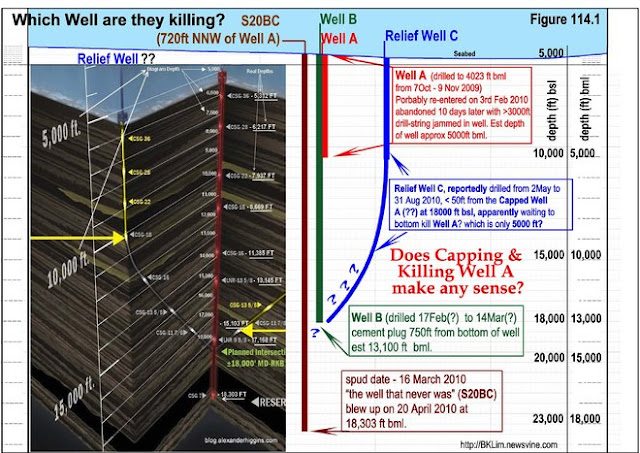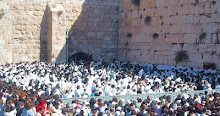Offshore Oil Platform Explodes in Gulf of Mexico, but No Leak Found
An explosion on an offshore oil platform in the Gulf of Mexico early today ignited a fire that caused workers to evacuate into the water, but the U.S. Coast Guard said that all the workers survived and there are no oil leaks reported near the platform.
The cause of the explosion is not yet known, but the 13 workers who were photographed floating in the ocean waiting to be rescued have been accounted for. They were airlifted to Terrebone General Medical Center in Houma, La.
U.S. Coast Capt. Peter Troedsson said none of the workers had serious injuries and the fire has been extinguished.
"The fire is out, and there are no reports of visible sheen in the water," Troedsson said at a press conference this afternoon. "There are no reports of leaks, but we continue to investigate."
Earlier reports from the U.S. Coast Guard had suggested that an oily sheen was seen near the site, sparking fears of another oil spill like the BP's Deepwater Horizon Spill, just east of this explosion.
A press release from the Mariner Energy said an initial examination of the site revealed no leaking oil.
"In an initial flyover, no hydrocarbon spill was reported," read the release.
Louisiana Gov. Bobby Jindal said at a press conference that Mariner Energy has told his office and the U.S. Coast Guard that the production platform was active at the time of the explosion, servicing as many as seven active wells. There are a total of 13 wells connected to the platform, said Jindal.
"They are saying that they've shut in the production platform," said Jindal. "If that's true that's a very important step but we haven't independently verified that."
Current production averages 1,400 barrels of oil a day, said Jindal, and 9.2. million cubic feet of natural gas. The maximum production of the platform is 1,800 barrels per day.
Jindal warned of the fast-changing information flow from these types of explosions, and said will not be confident that there is no sheen or that the fire is contained until it's independently verified.
Initial reports of the incident described the platform as being "completely engulfed in flames," according to Jindal. He said Mariner Energy believes one of the seven active wells connected to the platform caught fire, but that all seven are now shut down.
"What they suspect is burning is condensate or what is stored on this platform," Jindal said.
The fire is contained but still burning, according to the Coast Guard's Masaschi, who said that one of three firefighting vessels headed to the scene has already arrived.
The Coast Guard sent seven helicopters, two fixed-wing planes and a number of watercraft to the scene.
According to the Coast Guard, the platform was fixed in 340 feet of water. Workers have told authorities that they started emergency shutdown procedures before evacuating.
The platform does not have a standard blow-out preventer, a safety mechanism used to seal gas and oil wells, according to the Coast Guard.
Lee Hunt, the president of the International Association of Drilling Contractors, told ABCNews.com that this rig is different from Deepwater Horizon, which dumped millions of barrels of oil into the Gulf after exploding last spring, because it is not floating and is likely a "fixed, manned production platform."
"This platform doesn't have a drilling rig on it, it's essentially a small refinery that brings the oil up through a riser or pipe onto the deck of the platform," said Hunt. "Then the refinery equipment separates the oil from the gas and salt water. Pure oil never comes up."
A platform like the one where the explosion occurred is placed in position after a well is drilled and completed, said Hunt.
Hunt said he suspects the report of an oil sheen may be from oil already on the platform going through the refining process.
"My estimate would be that the sheen would be from some small quantities of oil being processed or even from the fuel tanks that may have been ruptured," he said. "There should not be any oil from the wellhead itself, this would be a surface spill."
White House spokesman Robert Gibbs addressed the rig explosion in his daily briefing saying, "We obviously have response assets ready for deployment, should we receive reports of pollution in the water."
It was not immediately known what caused the explosion on the rig, positioned 100 miles south of Vermillion Bay in Louisiana.
Phone messages left for Mariner Energy were not immediately returned, but the press release from the company commented on its production:
"During the last week of August 2010, production from this facility averaged approximately 9.2 million cubic feet of natural gas per day and 1,400 barrels of oil and condensate," said the release.
Bob Dye, a spokesman for Apache Corperation, which was in talks to merge with Mariner Energy earlier this year, would only say that they "don't operate the facility" where the explosion took place.
- And here, in yet more unpublicized details, the whole story, by an astute blogger: access the extensive information provided - no need for me to repeat it, the author is brilliant, and apparently a geologist to boot.
- Of course, don't forget to go back to all the posts about the BP catastrophe on ISRAEL TRUTH TIMES, starting June 11, 2010, by searching for the label "BP" on this blog, for the scoop.












1 comment:
From Zero Hedge, comments:
by ColonelCooper
on Thu, 09/02/2010 - 15:55
#560545
.. I work on oil and gas pipelines, and have worked on many leaks/spills/releases etc. Some of them were as big or bigger than some that have made headlines since GOM. I don't see it so much as a cover up, rather it was business as usual until GOM. Old systems leak and blow out. Environmental and governmental resistance to building new lines is the main reason more new infrastructure isn't built. The oil companies are not blameless, but the almighty dollar rules; in MANY cases it would be cheaper for them to replace rather than repair. They just aren't allowed to do it. SOoo they work with old shit, it leaks, they fix it and clean it up. Nothing nefarious.
Explosions happen, it's dangerous ass work. I lost a friend/co-worker a couple of years ago in a blowout. My opinion is that you just don't hear about them if there aren't pelicans and shrimp involved. Workers are dispensible, a good story is priceless.
That said, (and having NO offshore experience) the GOM incidentS are curious. We need more info. on this one before we get too worked up about conspiracies. I'm not down playing the incident, rather believe that it may be a bigger STORY for the media than anything else. Like Pennsylvania. Like Alaska. Like Texas (that one was just BAD ASS human error screwup btw) etc..
Post a Comment